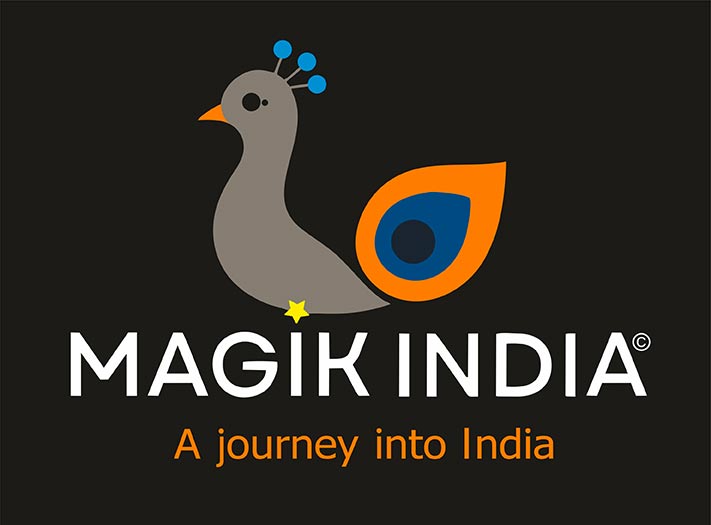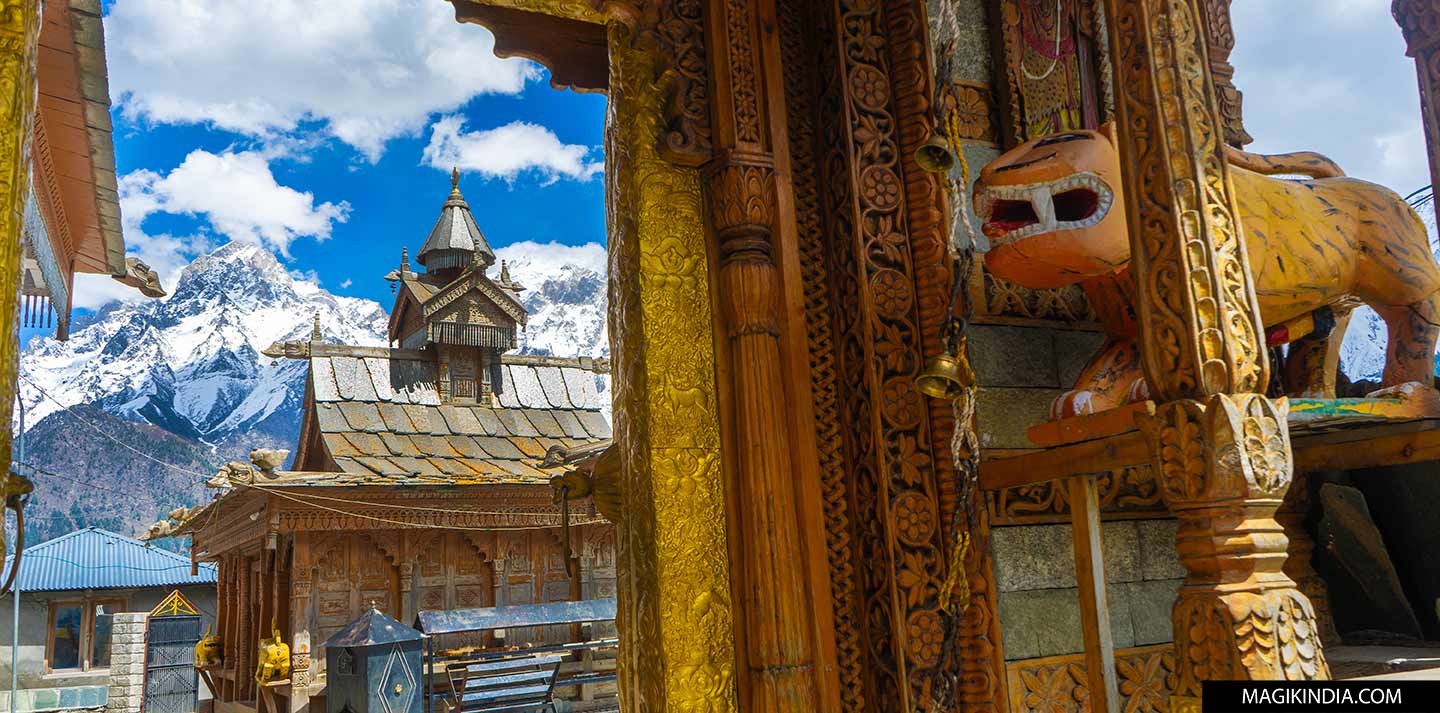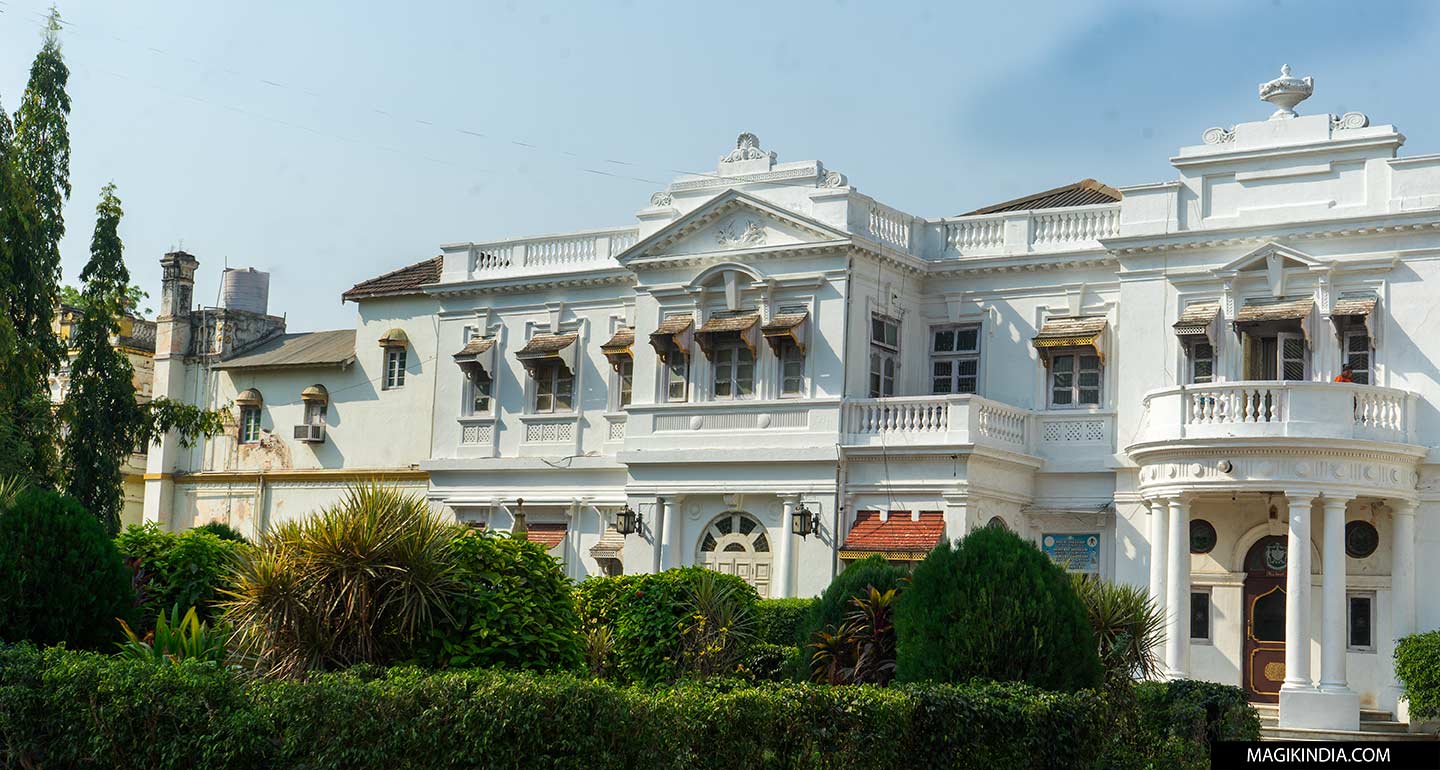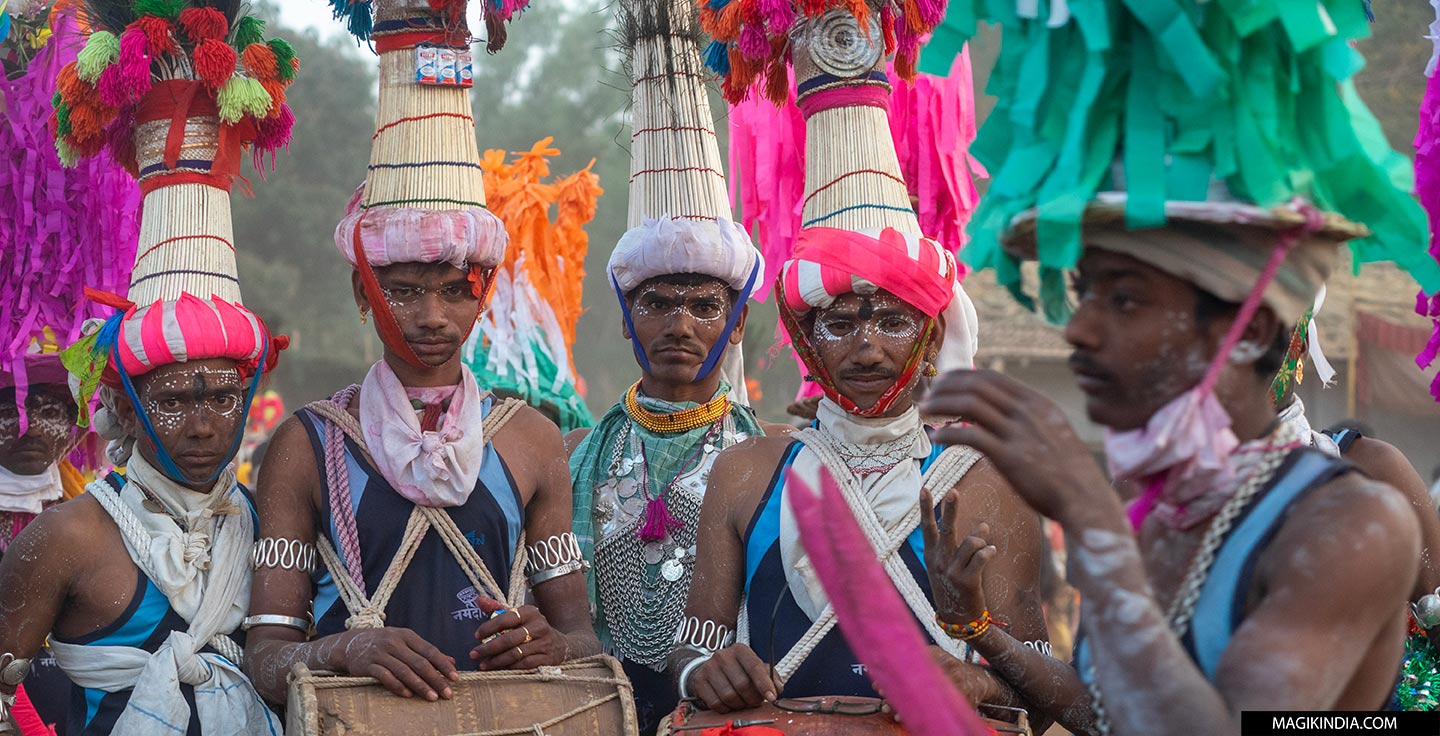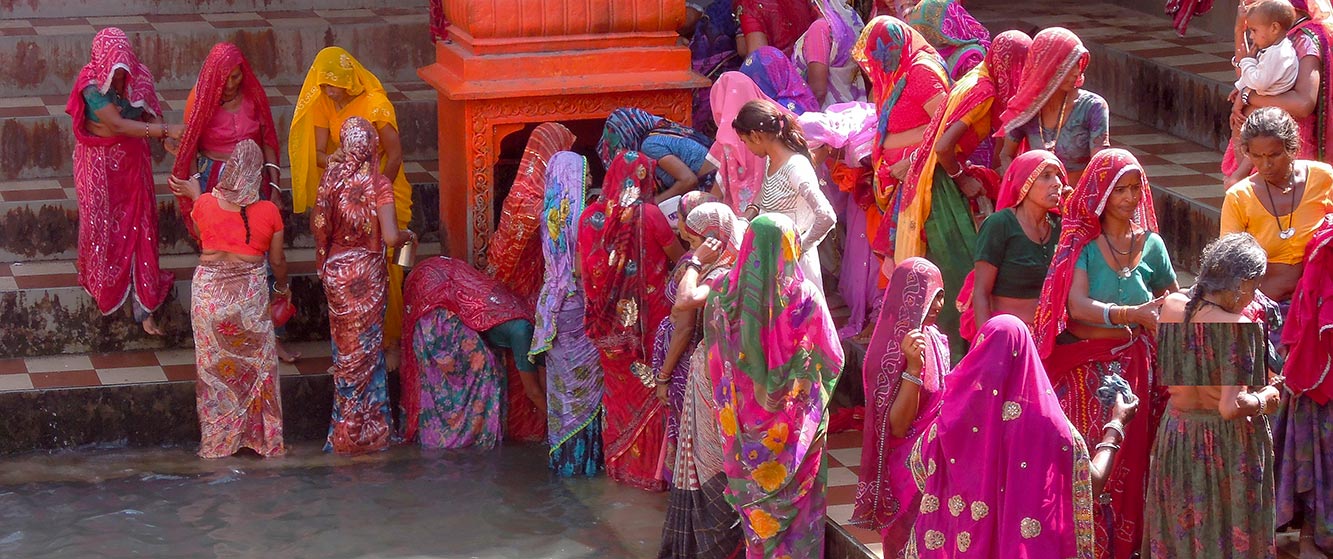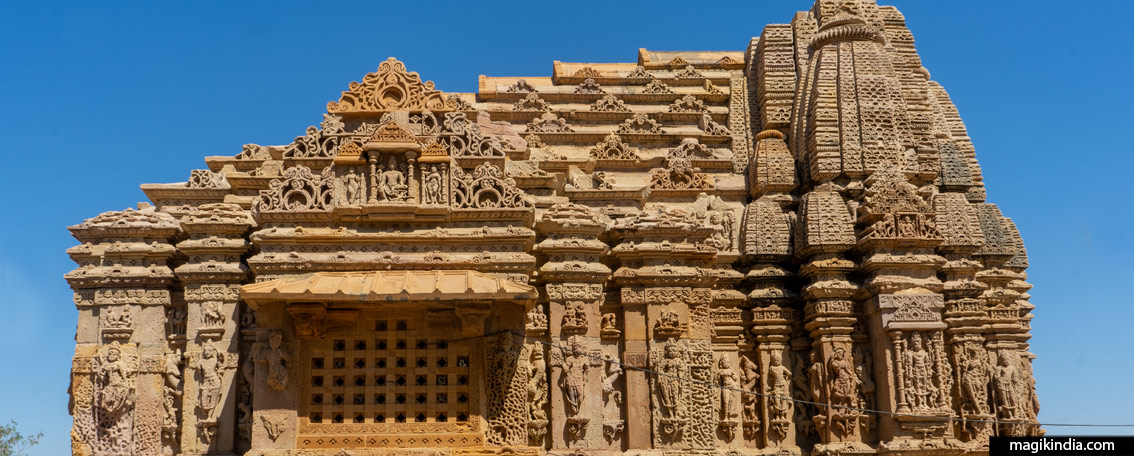
Kotay, the sun temple of Kutch
Kotay, just an hour north of Bhuj (Gujarat), boasts the remains of a temple dedicated to Surya, the Hindu sun god, dating back to the 9th century CE. Also known as Ra Lakha, the shrine, although polished by the hot winds of the desert plains of Kutch, still retains its beautiful features.
Kotay Temple is located at the very end of a bumpy road, lost in the middle of nowhere. I travelled there with a local guide, as the site isn’t marked on the road. It’s still a little-known place.
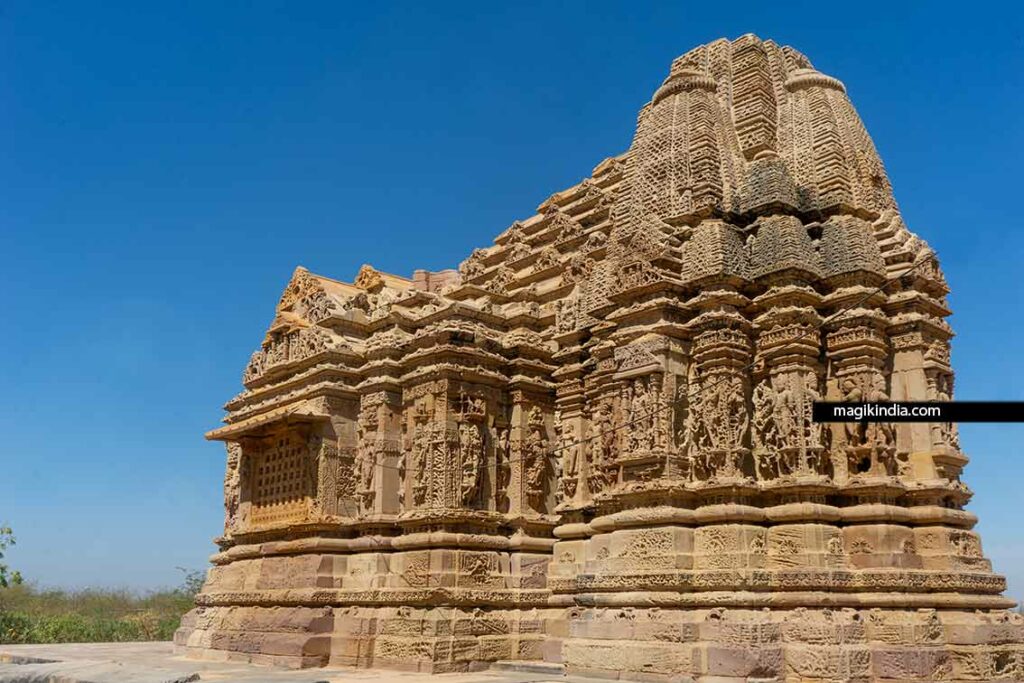
The few photos of this temple I had stumbled upon online had made my mouth water, and I promised myself I wouldn’t miss this site on my next visit to the Kutch region. And, I wasn’t disappointed when I saw this little marvel in person.
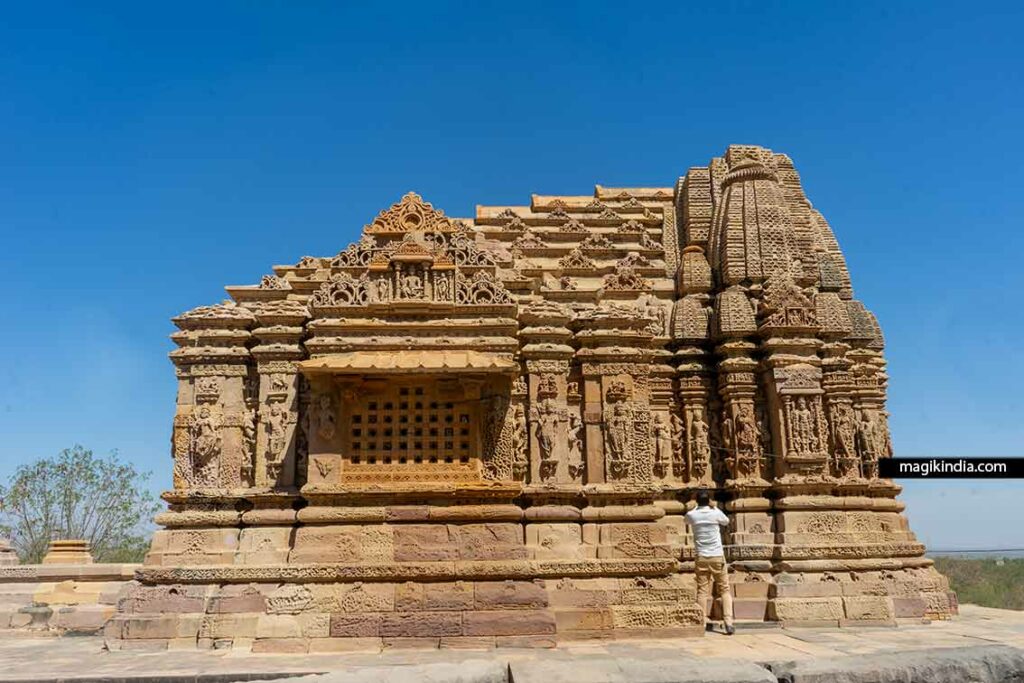
We pass through a gate and walk towards the site under the relentless March sun. There is not a soul in sight, nor a guard.
The temple, built of yellow and red sandstone, stands on a platform facing west. Also known as Ra Lakha, this building has been attributed to Lakha Phulani, grandson of the king of Sindh (present-day Pakistan), Jam Lakho Dhuraro. It is believed to have been built in the 9th century CE.
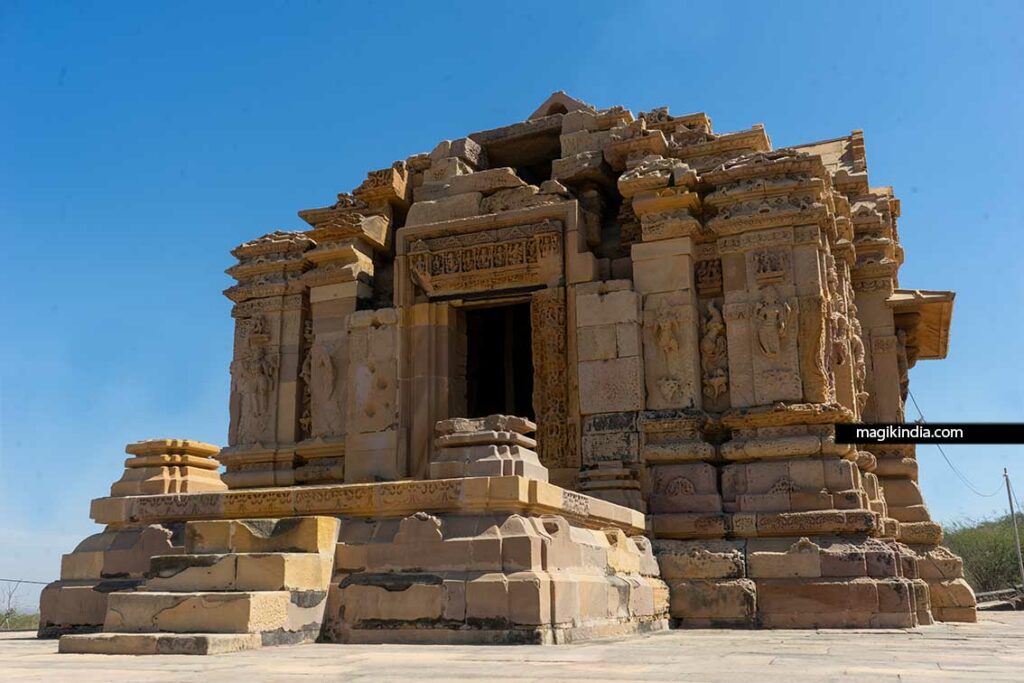
At the entrance, the mukha mandapa (four-pillared pavilion) is absent, only the bases of the remaining pillars indicate its location.
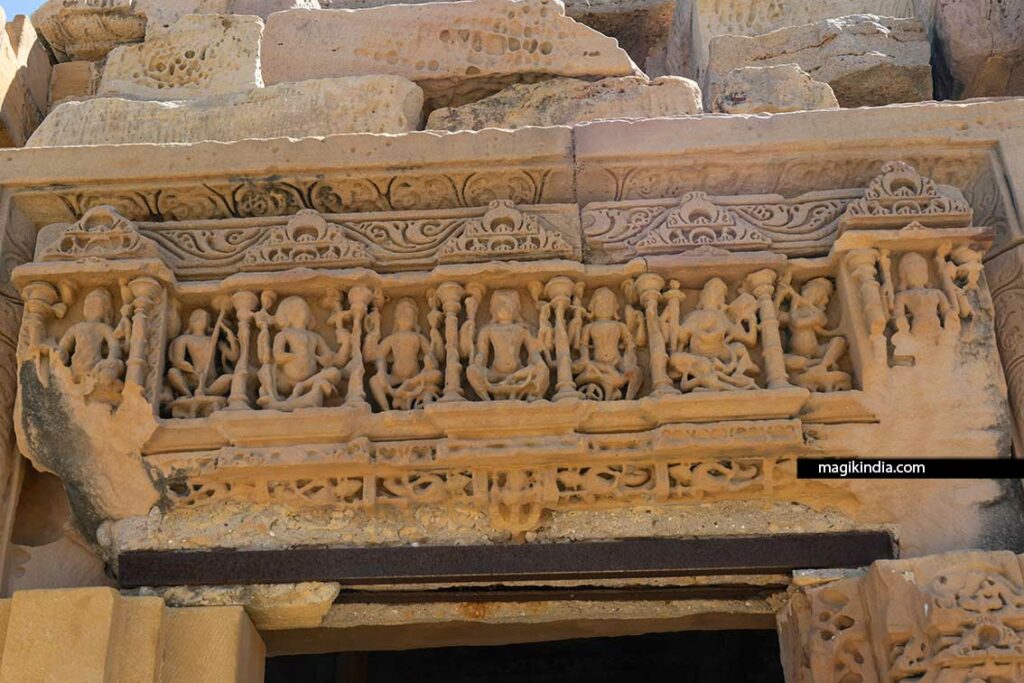
I walk toward the sabha mandapa (the sanctuary hall), whose door is elaborately carved. The lintel is adorned with the Navagrahas, the nine planets of Hindu cosmology believed to influence human destiny.
Indian Vedic astrology is based on nine grahas (planets), collectively called navagrahas, nava meaning nine. They include the sun (Surya), the moon (Chandra), Mars (Mangala), Mercury (Buddha), Jupiter (Brihaspati), Venus (Shukra), Saturn (Shani), Rahu (north node of the moon), and Ketu (south node of the moon).
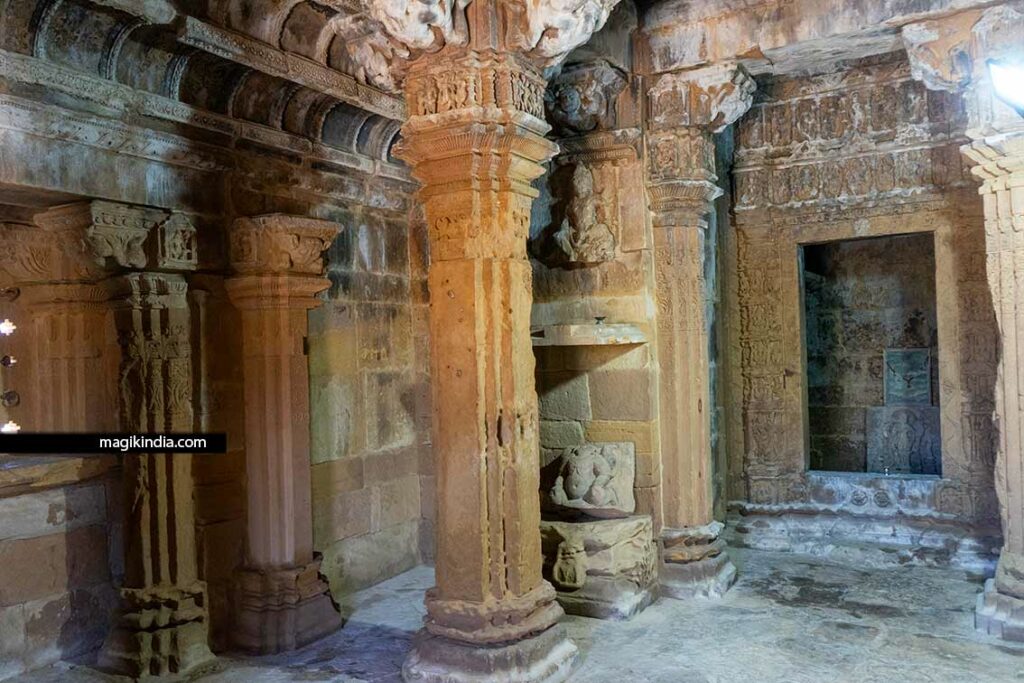
The sabha mandapa is supported by square pillars composed of several ridges. The capitals are carved with yakshas, nature spirits, guardians of temples, also believed to bring prosperity and wealth.
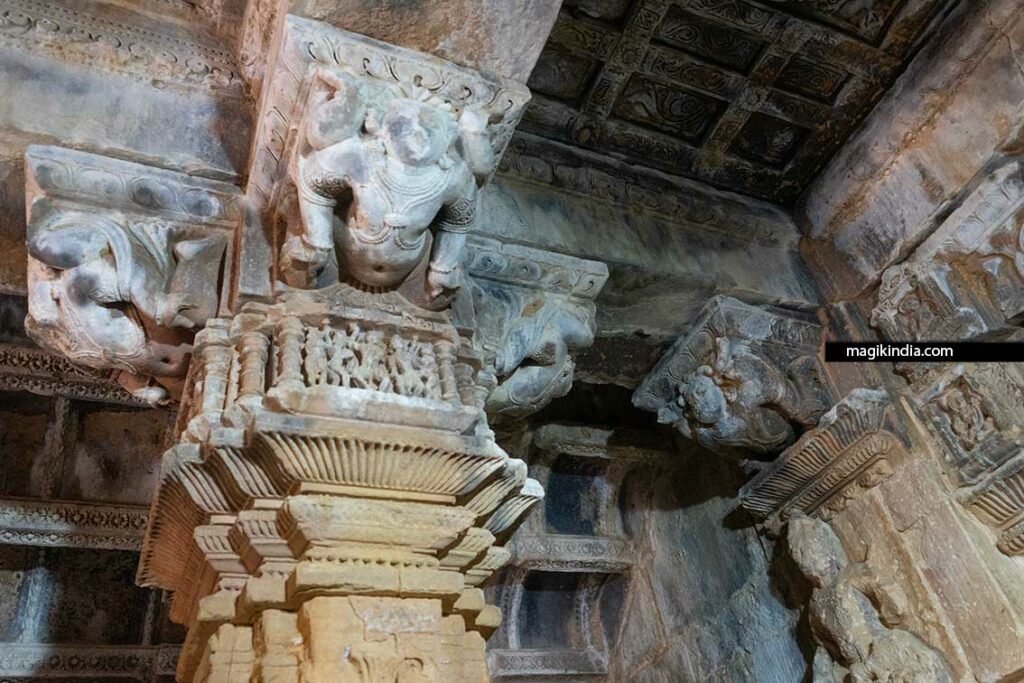
The lintel of the sanctuary door features a beautiful carved frieze of two rows of deities. The jambs are equally richly ornamented.
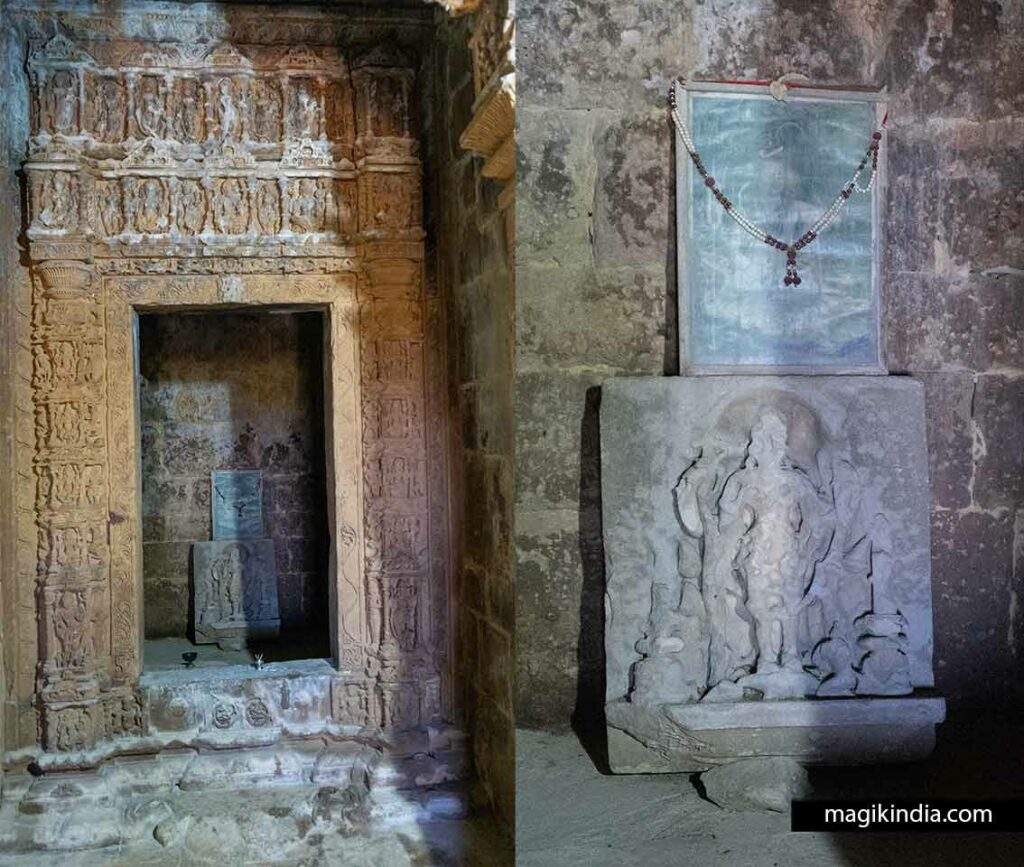
The garbhagriha (holy of holies) contains a badly damaged plaque flanked by a barely visible image of Surya.
Interestingly, a picture of the god Shiva is placed above this stele. Some scholars believe that the Kotay temple is not dedicated to Surya, but to Shiva. The most convincing argument is that the entrance to the temple is located to the west and not to the east as is the case for all the sun temples in India, Konark (Odisha), Modhera (Gujarat) to name but a few. The Vedic texts state that Surya comes from the east to enlighten and illuminate thought.
Kotay may also be a syncretic version of Shiva-Surya, with Surya often being identified with Shiva. The Aditya Hridayam, a hymn recited by the great sage Agastya of the Ramayana, states that there is no difference between Surya and Shiva.
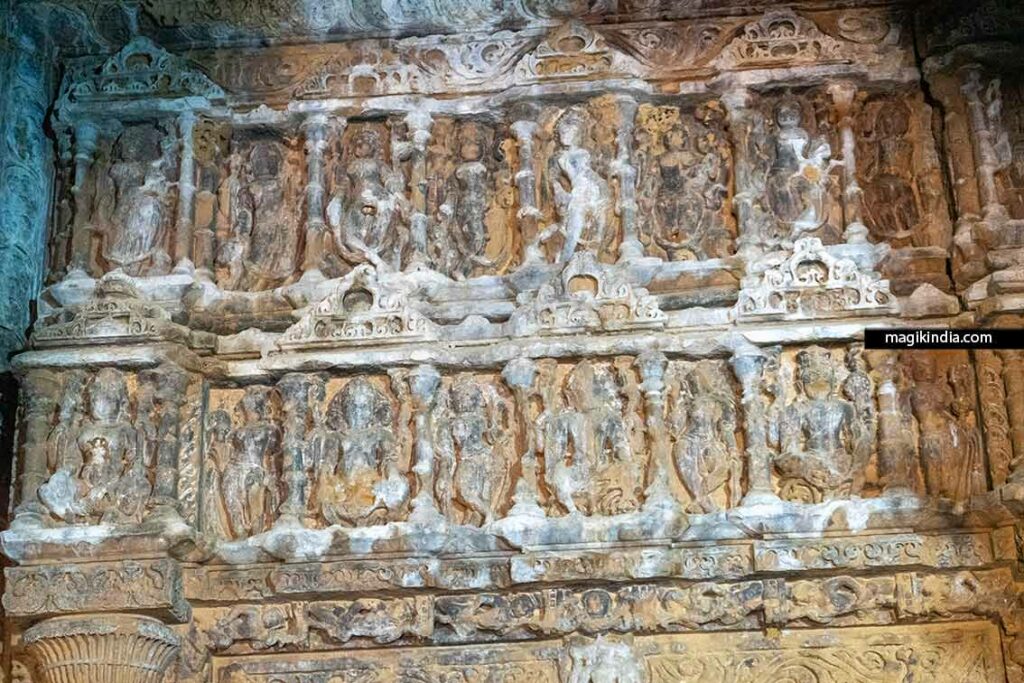
Externally, the temple has a sloping roof divided into four sections of slightly different heights; the upper part of the temple spire is missing.
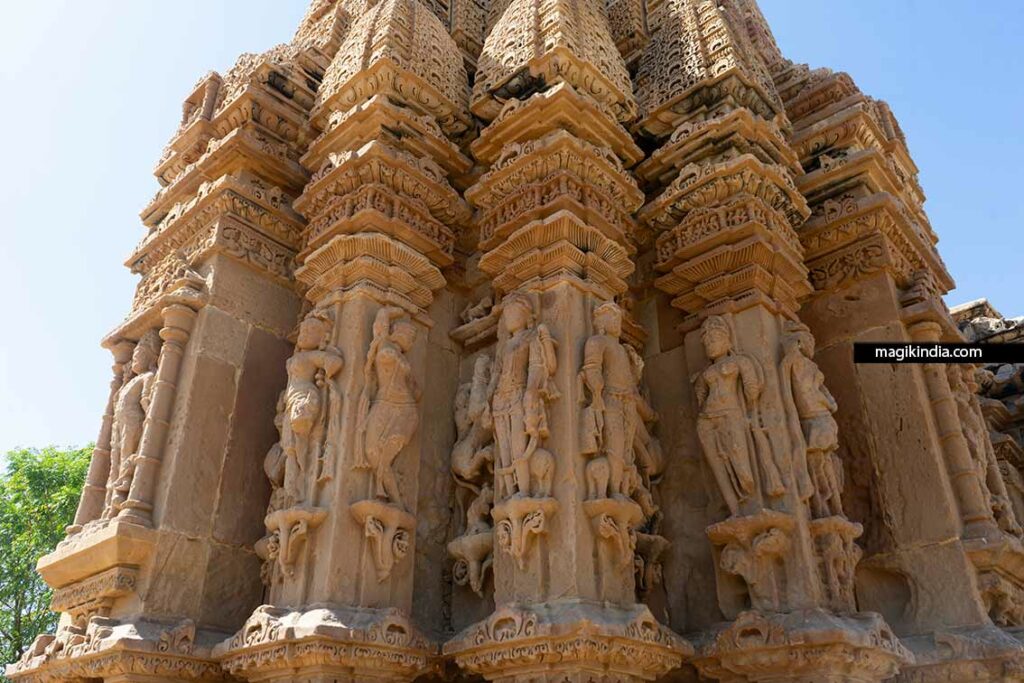
The northern facade of the temple is the best preserved. It is decorated with several figures, Hindu deities, aspara nymphs, and mythological animals such as yalis, believed to protect and guard temples. Yalis generally have the stylized body of a lion and the head of another animal, most often an elephant (gaja vyala), a horse (ashva vyala), a human (nir vyala), or a dog (shvana vyala).
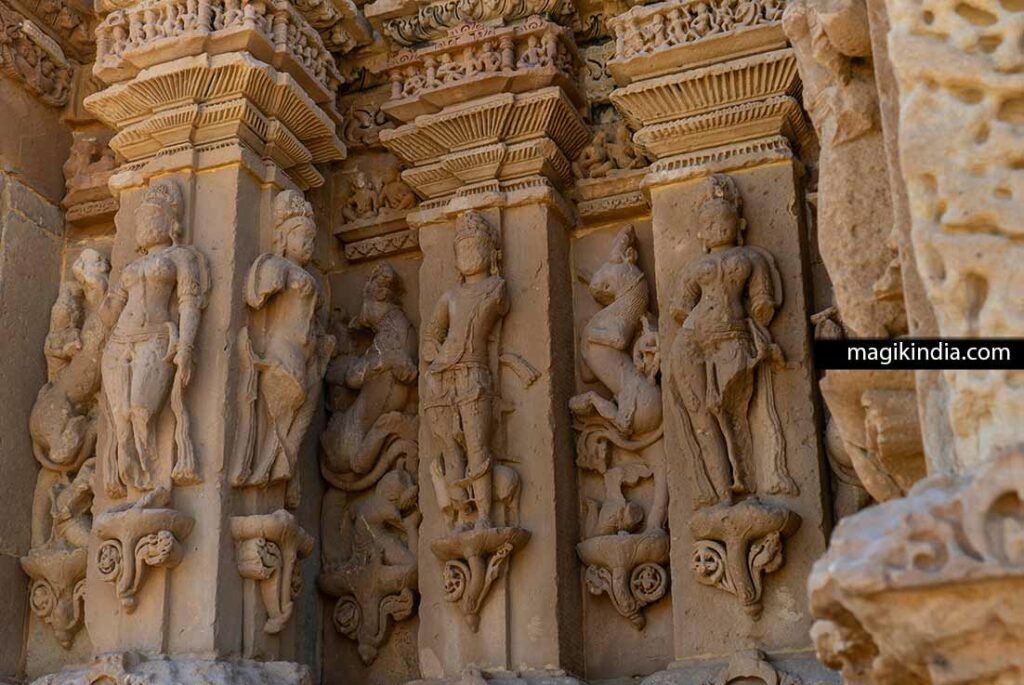
At the rear of the temple, in the center, one can see the statue of Surya depicted with open lotus flowers in his two raised hands, the other two arms resting on the heads of his assistants, Pingala and Dandi, respectively the defender of justice and the one who records good and bad deeds.
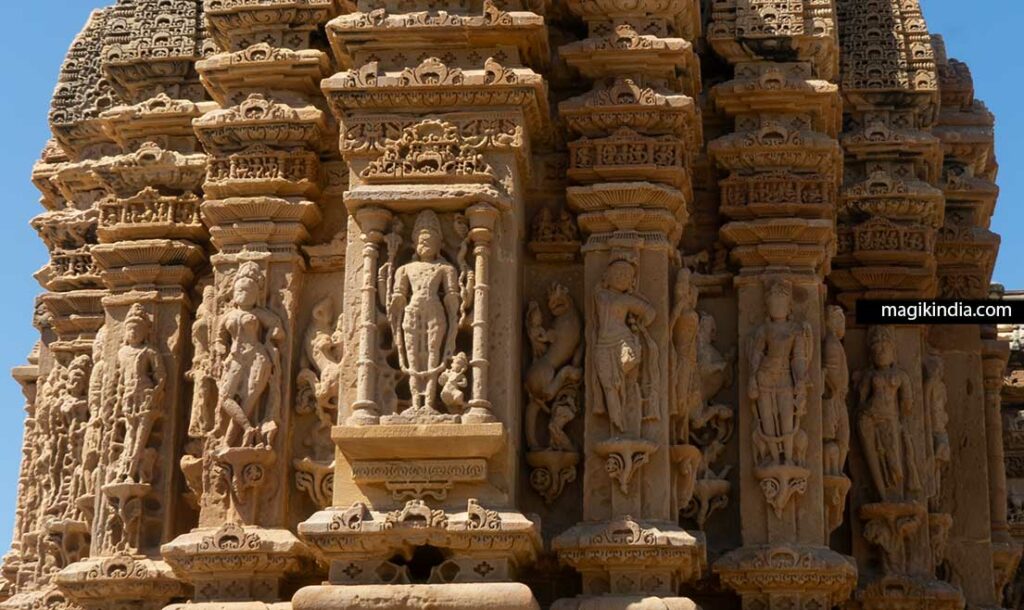
The southern façade is badly eroded. However, its window is interesting, with a jali (openwork stone screen) topped with a seated statue of Surya and jagged decorative motifs. Jalis in Indian architecture were designed to allow diffuse ventilation and imbue the temple interior with a hushed atmosphere that encourages devotion and concentration.
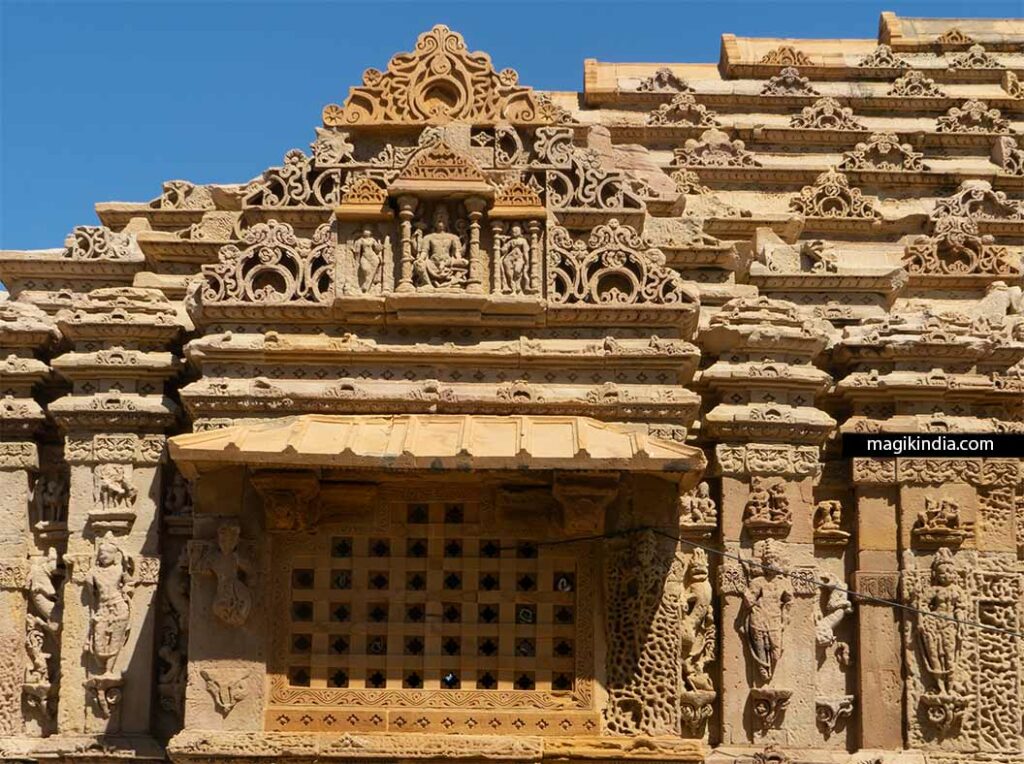
As I write this page, I realize how passionate I am about these Vedic deities, and this will surely be the subject of my next article. Stay tuned on MAGIK INDIA!
How to reach the Sun temple of Kotay?
The Sun Temple of Kotay is located in Kotay village, in the Bhuj Taluka of the Kachchh District in Gujarat, India. Here’s a breakdown of how you can reach it:
1. By Air:
- The nearest airport is Bhuj Airport (BHJ), which is about an hour’s drive (approximately 25 km) from Kotay.
- From the airport, you can hire a taxi or a private car to reach Kotay.
2. By Train:
- The nearest major railway station is Bhuj (BHUJ).
- From Bhuj railway station, you can hire a taxi or take a local bus to Kotay. The distance is approximately 30-40 km, and the journey by road will take around an hour to an hour and a half.
3. By Road:
- Kotay is accessible by road. You can drive from Bhuj or other nearby towns.
- State transport buses and private buses also operate in this region, and you can check for services to Kotay or nearby areas. From there, you might need local transport to reach the temple.
- Hiring a private taxi or car from Bhuj might be the most convenient option for a comfortable journey to Kotay.
Location Coordinates: 23.384649684876, 69.783058593904
